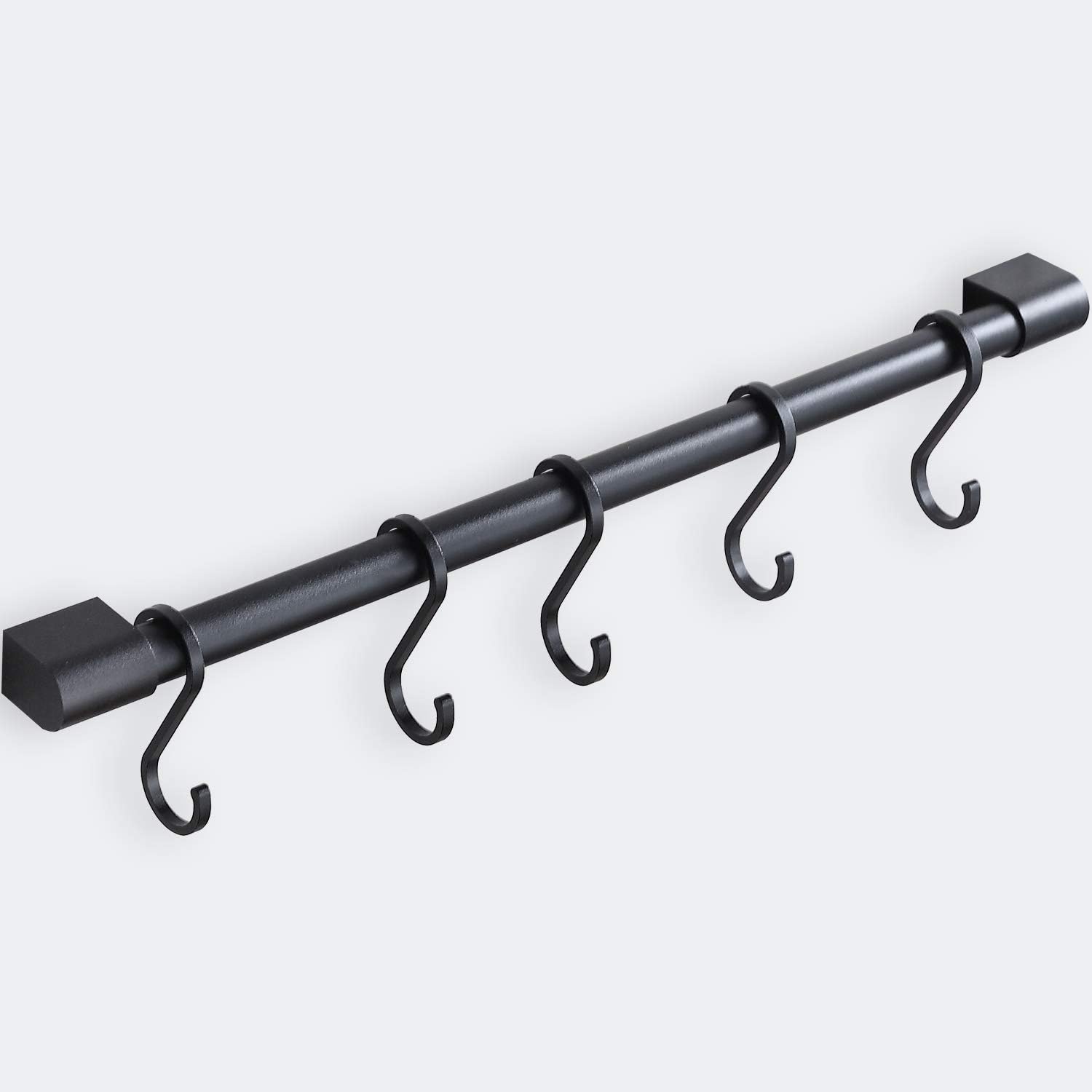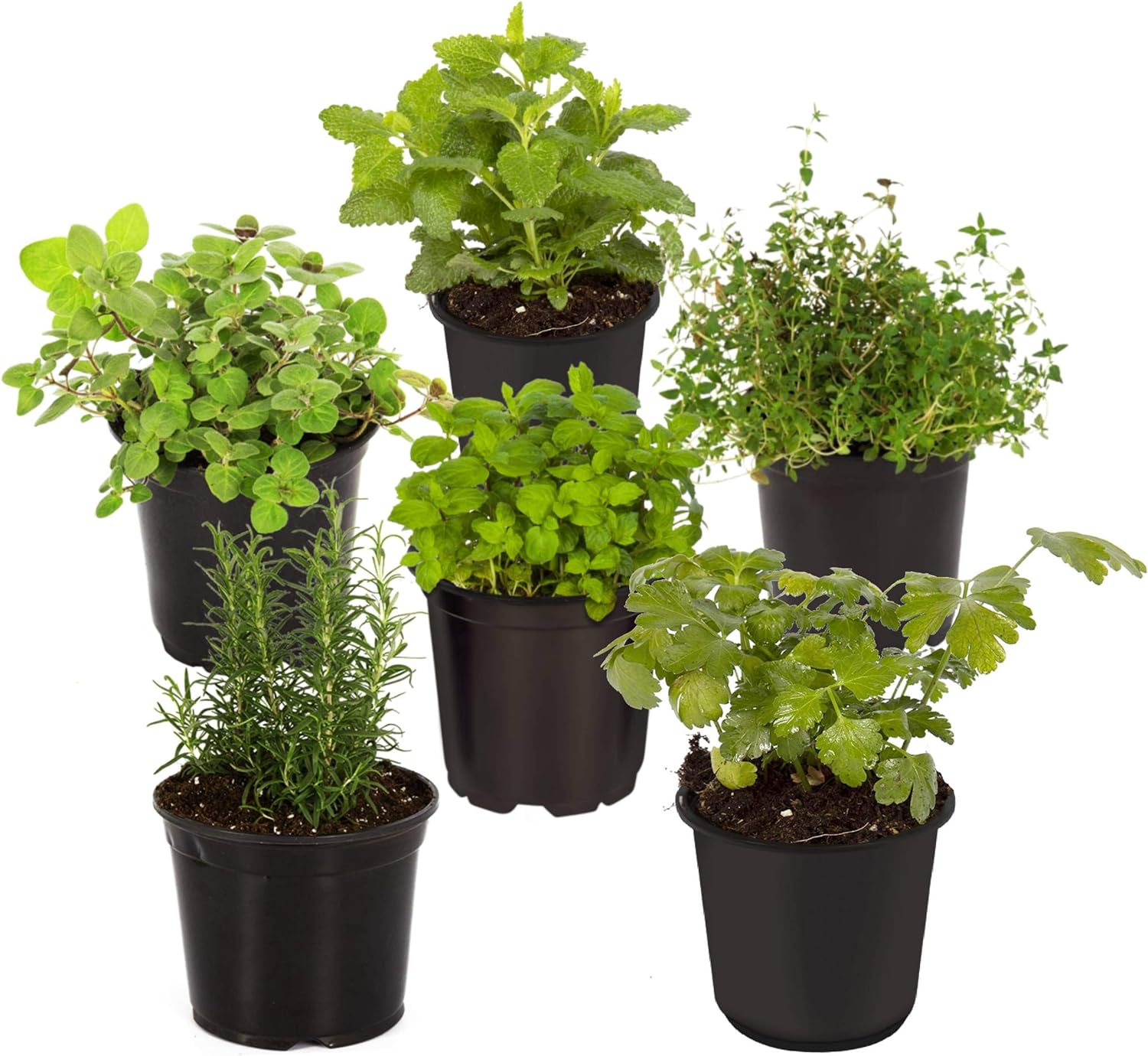8 indoor herb garden ideas that will look great, and make your home smell amazing
Looking to grow herbs indoors? These easy ideas and expert tips will ensure you create a beautiful edible garden, that smells fragrant, too

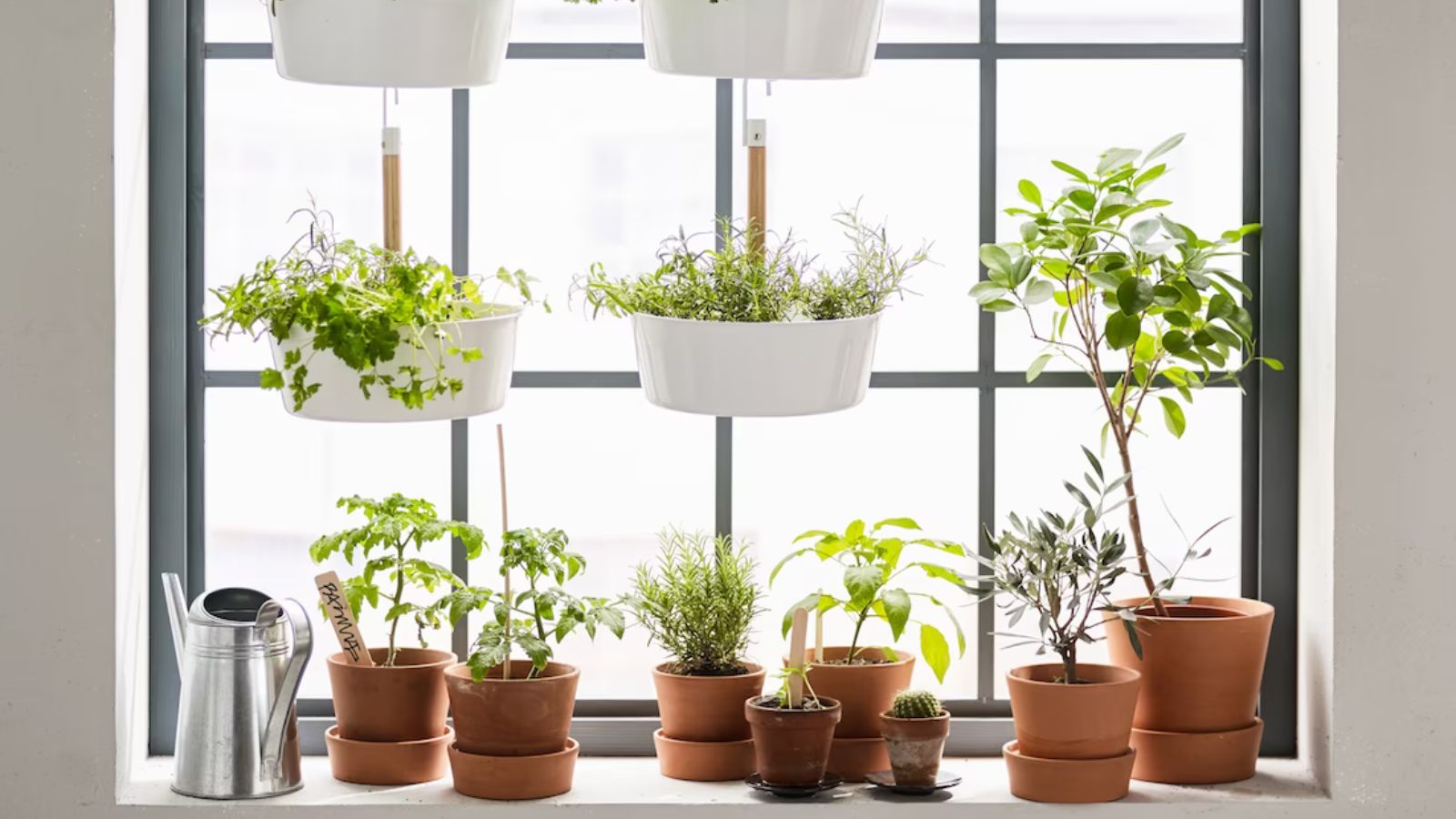
There's something so satisfying about growing your own produce. Planting something up, watching it grow, and then using it in your own kitchen. Everything tastes sweeter when it's homegrown and of course, there's something very satisfying about getting to smugly mention, 'Ah that salad you are eating? Yes, I grew it myself.'
And the good life needn't only be reserved for those who have outdoor space. You can get a taste of it indoors too, and an indoor herb garden is where we would recommend starting. A lot of herbs are super easy to maintain, they are often quick growers and they can have such an impact on your cooking. Plus, they look lovely in the kitchen, adding texture, greenery, and a beautiful scent.
But where to start? We spoke with the experts and asked how to start a thriving indoor gardens filled with herbs – from where to position your set up, what herbs will work best, and how to turn your garden into a real display that's going to add something to your kitchen as well as your cooking.
1. Pick the right spot for your indoor herb garden

The spot you pick for your herb garden is key to its success. In terms of the room, the kitchen makes the most sense as you can easily reach for your herbs as and when you need them. But what other conditions do you need to consider in order for a herb garden to thrive?
'You’ll need to find the right spot indoors. Ideally, it needs to be an area where the herbs will get at least 6-8 hours of sunlight per day,' explains gardener Mark Lane. 'South-facing windows are ideal, but if you lack natural light, consider using grow lights . To ensure your herbs receive an even amount of sunlight, rotate their pots regularly. This prevents them from leaning toward the light source and promotes balanced growth.'
Sara Ganatas of the Urban Garden NYCagrees, 'A sunny windowsill can be a great place. If the sun is too intense, perhaps just move it a little further away from the glass. Another tip is to watch when it gets cold, sometimes directly next to the window can get too cold. I feel like a good location, if you have the space, is somewhere in the kitchen since that is where you will likely be using the herbs.
'If you are really lacking in natural light, placing the garden near artificial lighting can work well in regions with limited sunlight. Ideally, the location should have stable temperatures, away from drafts or heat sources that can cause fluctuations and potentially harm the plants. Also, choosing a spot where the herbs can be easily accessed encourages regular harvesting, promoting healthier growth.' adds Tony O'Neil, founder of Simplifying Gardening.
The Livingetc newsletters are your inside source for what’s shaping interiors now - and what’s next. Discover trend forecasts, smart style ideas, and curated shopping inspiration that brings design to life. Subscribe today and stay ahead of the curve.
2. And choose the right containers and compost
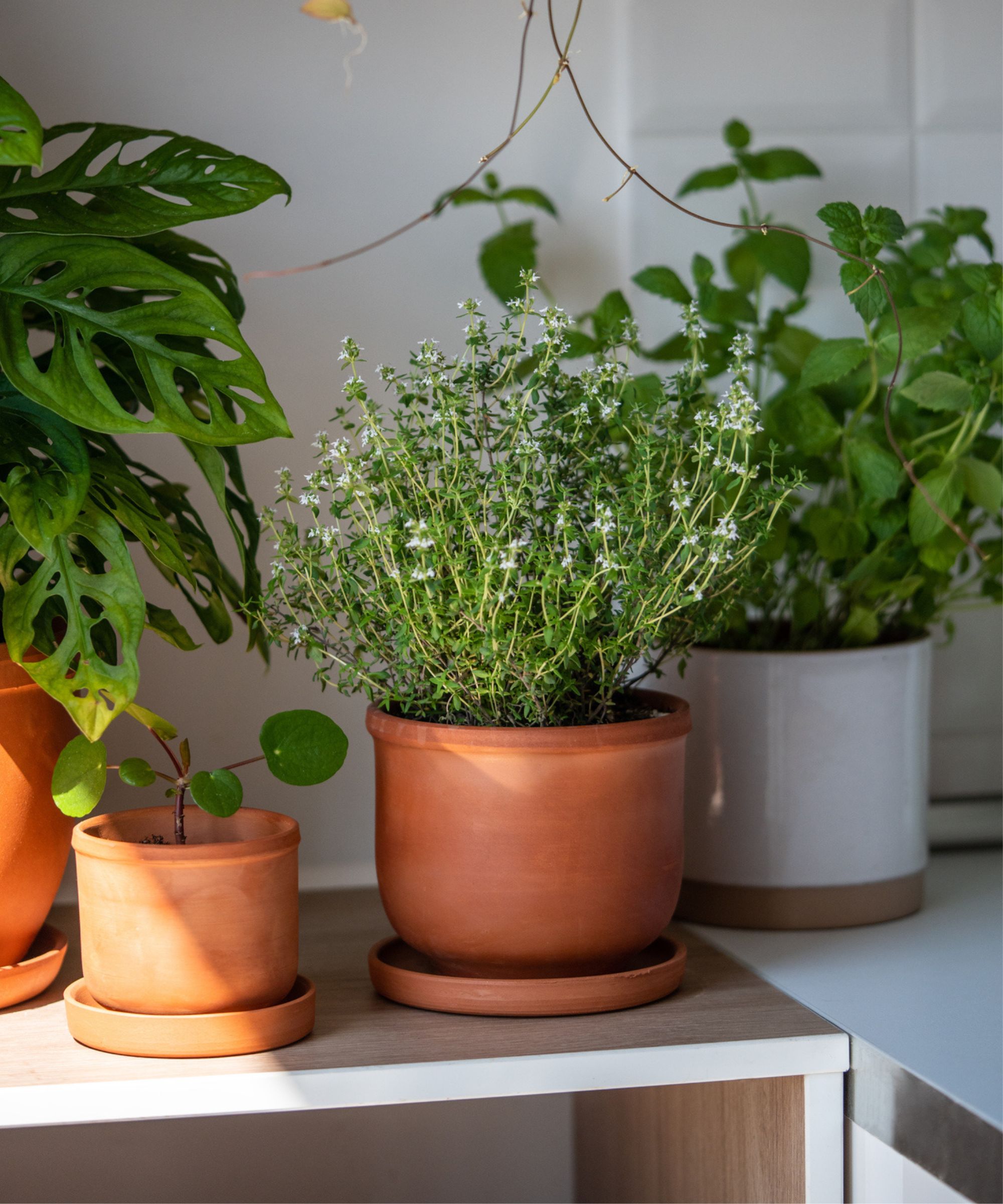
Next up is getting the right home for your herbs – the soil and the container. Don't get sucked in by aesthetically pleasing pots, you need to ensure they are up for the job.
'I think good soil is a great starting point,' explains Sara. 'When growing edibles, I always suggest using high-quality, organic soil. And proper drainage in the planter/pot is essential. The "vessel" should not only have drainage holes in the bottom but we put a layer of gravel or broken pottery. This helps the water to drain out and prevent the drainage holes from getting blocked with soil.'
'Always remember to use pots with drainage holes and grow in a peat-free, multi-purpose compost with additional horticultural grit for added drainage – herbs hate sitting in water.' adds Mark.
'Overwatering is a common mistake with herbs, so allow the top inch or so of soil to dry out between waterings. When you do water, do it thoroughly but make sure excess water drains out. Also, avoid over-fertilising herbs as this can lead to leggy growth. A balanced liquid fertilizer, such as tomato feed, diluted to half strength can be applied every 4-6 weeks, but only during the growing season.'
3. Grow herbs that will thrive indoors (and you will use)
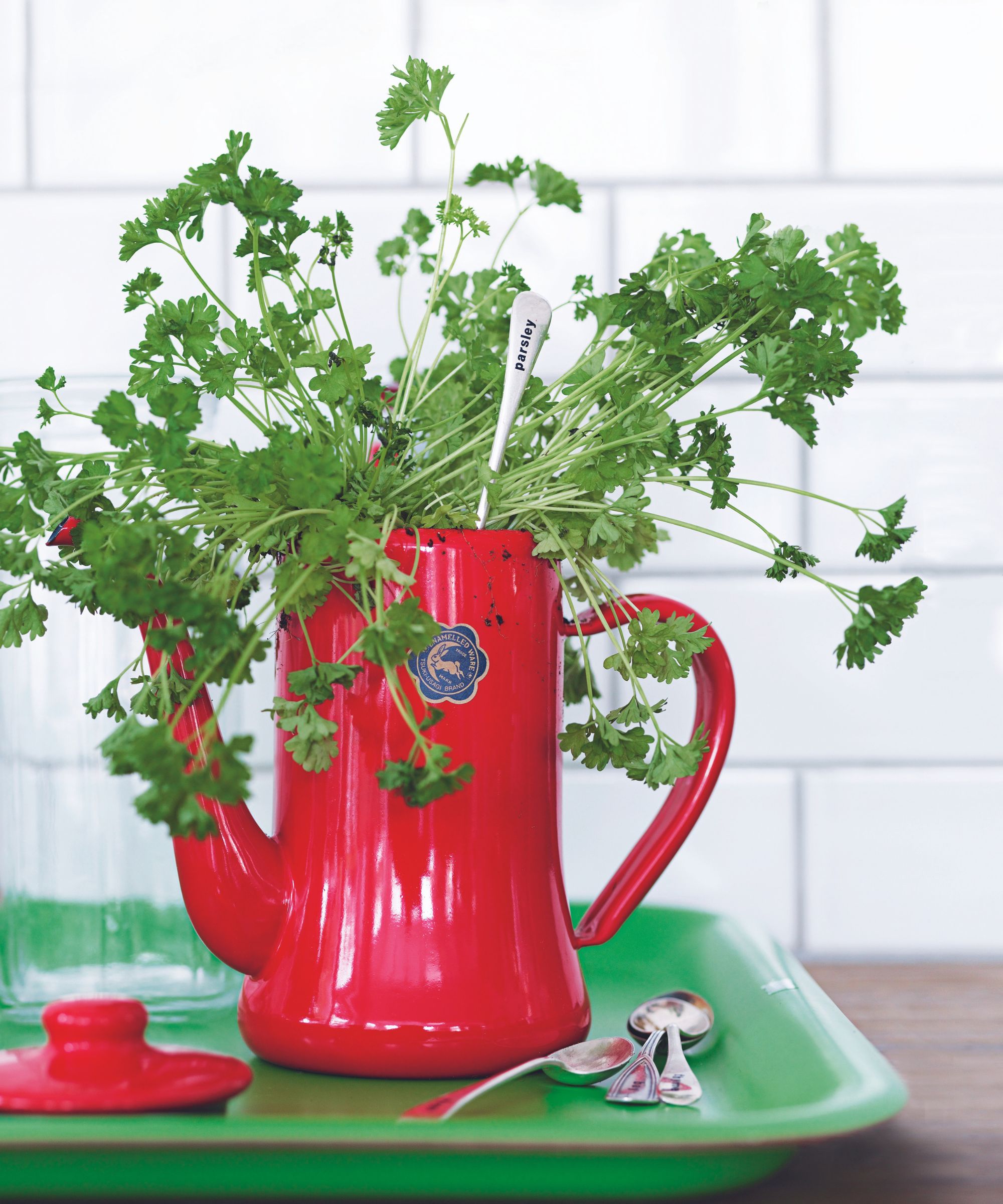
Most herbs will grow well in kitchens, but it goes without saying to only grow herbs you know you will use. 'I always start with herbs I could eat and herbs I can smell. If you just grew parsley, coriander, and mint, you’ve got a complete meal that you can do masses of things with.' explains Jekka McVicar founder of Jekka's herb farm.
'Several herbs do well indoors, providing culinary and aromatic benefits. Some of the best options include basil, known for its sweet fragrance and versatility in the kitchen; mint, a robust grower offering a fresh flavor; and chives, which are simple to grow and provide a mild onion flavor to dishes. Rosemary and thyme are also good choices as they are flavorsome and bring a lovely aroma to your indoor space. Consider your preferences and the types of dishes you usually prepare while selecting.' explains Tony.
'Of course, you want to grow herbs that you’ll use on a regular basis in cooking, for making tinctures or for making potpourri. Great choices that are easy to grow are basil, Thai basil, mint, coriander, flat-leaf parsley, rosemary and thyme. All of these can be grown from seed, but you can also buy herbs growing in pots from stores.' adds Mark.
'If you look closely at store-bought herbs, you’ll see that there are several plants crammed into a single pot. Water the potted herb and then gently tease apart the separate herb plants and pot each plant into a pot all its own. This could mean ending up with a dozen plants of the same herb, so consider giving a few away to friends and family.'
4. Create a chic display with terracotta pots
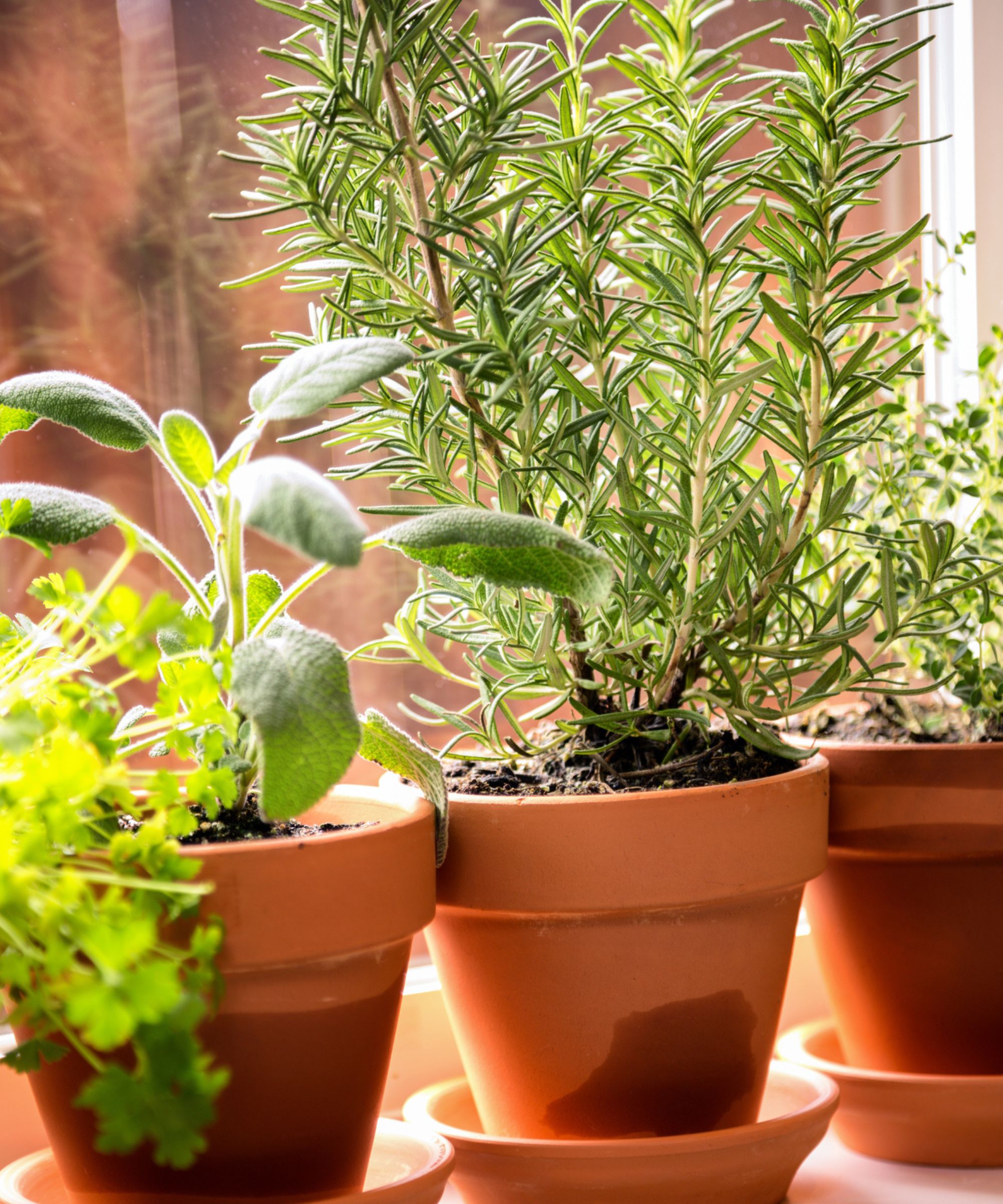
Not only are terracotta pots ideal for growing herbs because they allow the soil to breathe, they look super chic lined up along a window ledge or to add some texture and greenery to kitchen shelving.
'Terracotta pots are perfect for planting up indoor herbs – one for each herb so you can place them around in different spots. Most herbs can be grown in a 5" or 6" pot. However, if you have the space for larger, that is good because they will grow bigger with more space,' says Sara.
Since terracotta pots absorb access moisture, they are particularly suited to more Mediterranean herbs that are used to dry conditions. Basil, thyme, and rosemary will all thrive, just keep an eye on the herbs that like moist conditions and top them up more regularly.
5. Make use of vertical space

If space is tight in a small kitchen, grow your herbs vertically. Not only will this free up your countertop it creates more of a display of your indoor garden. Most herbs will be more than happy to grow like this, and the more delicate herbs like cilantro and parsley look even more beautiful when they start to trail.
A setup like this makes it super easy to get use from your herb garden too, and you could even create an indoor vegetable garden and get some tomatoes and chili peppers growing. If even kitchen wall space is stretched, hanging baskets can work well indoors just as long as they get enough light, so try them in front of a window.
6. Keep on top of pruning so your herbs don't outgrow their containers
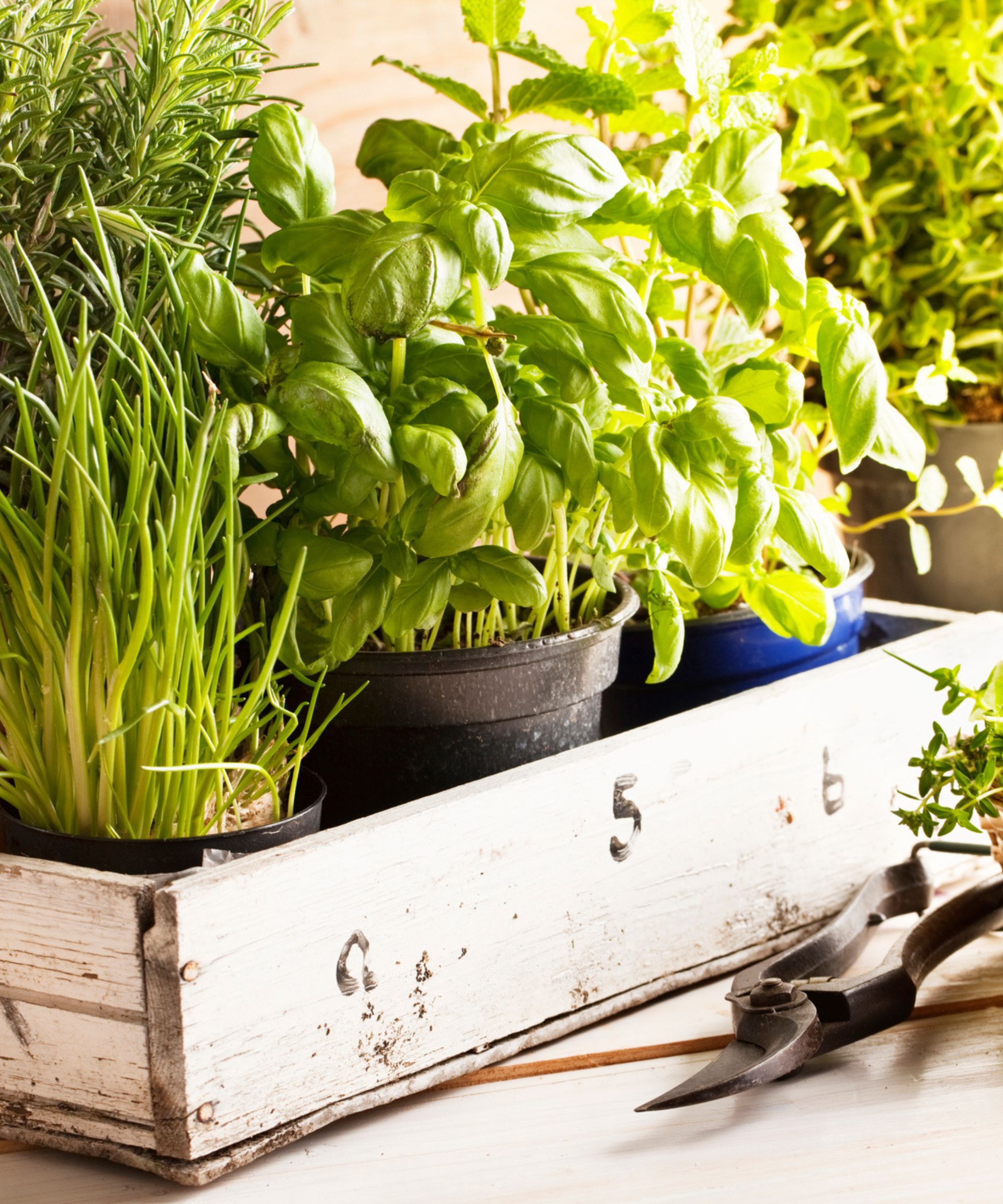
This is where you have to be a bit more on it than you would do with an outdoor kitchen garden. Unless you have the space to keep repotting your herbs into larger containers, you need to ensure they don't outgrow their pots. That means heavy pruning. Hopefully, you'll get enough use out of your herbs that this should happen quite naturally but you may need to give them a chop every now and then..
'It's important to keep on top of pruning. Pinching off the tips or pruning growth regularly encourages branching and therefore bushy growth, while also providing lots of fresh tips for culinary purposes. Any excess herb material can be frozen in ice cubes to be used later. Just note that, when it comes to harvesting herbs, morning is the best time, as the oils responsible for flavor are at their peak.'
7. Get clever with mason jars
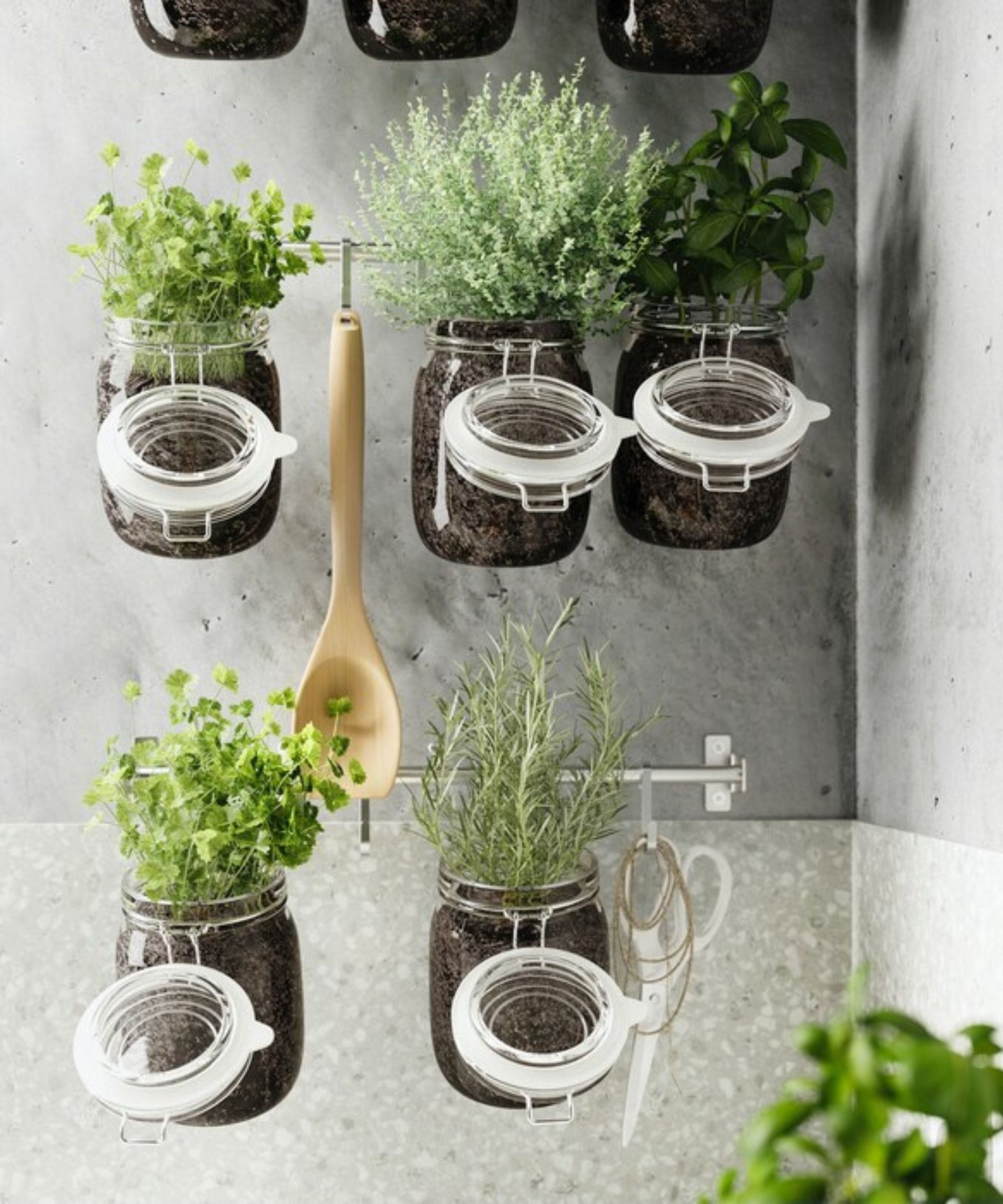
And easy weekend project that looks cute and can be created with any jars you would normally recycle, they needn't all be uniform. Mason jars do work well as they don't taper towards to top as you may find with some jars, so your herbs will have plenty of room to grow.
But what about drainage? Don't try drilling holes into the base of your jars, they will usually just smash. Instead, before you add in the compost, add a layer of stones that will help prevent the roots from rotting. And just keep an eye on the moisture levels, you'll probably find you have to water your herbs less if you are growing them in glass containers.
8. Or recycle your tins

Rather than throw away old tins, especially ones that actually look quite cute (anyone else buy tinned olives just for the colorful tins?), save them to create an indoor herb garden.
As we have already mentioned, drainage is key, so you will need to carefully drill a few holes in the base before you plant up your herbs. Personally, we love the simple, slightly rustic look of a tin can, but if you want to disguise your tins so they look less... tin-like, paint them to suit your kitchen color scheme better.

Formerly the Digital Editor of Livingetc, Hebe is currently the Head of Interiors at sister site Homes & Gardens; she has a background in lifestyle and interior journalism and a passion for renovating small spaces. You'll usually find her attempting DIY, whether it's spray painting her whole kitchen, don't try that at home, or ever-changing the wallpaper in her entryway. She loves being able to help others make decisions when decorating their own homes. A couple of years ago she moved from renting to owning her first teeny tiny Edwardian flat in London with her whippet Willow (who yes she chose to match her interiors...) and is already on the lookout for her next project.

